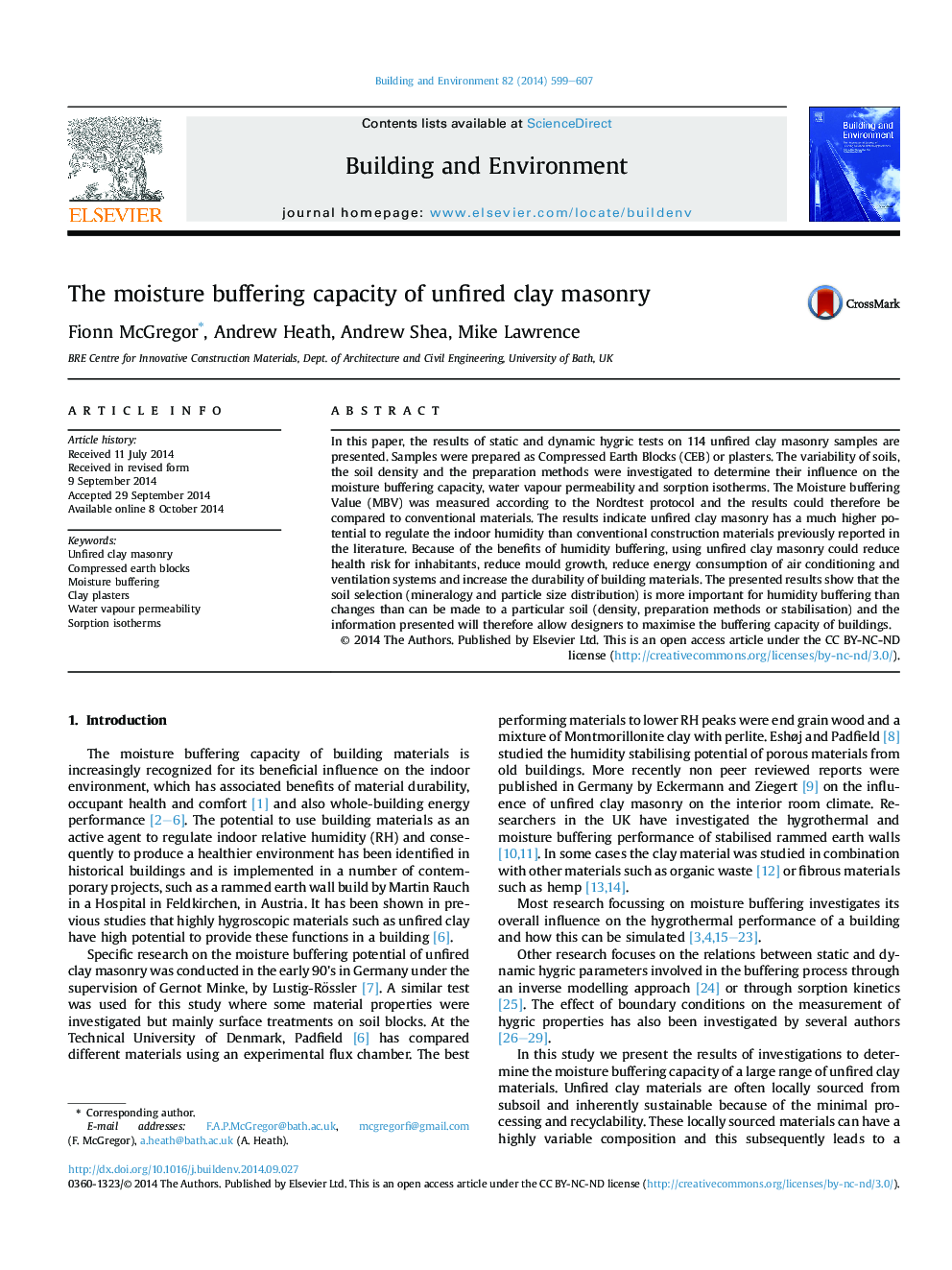| Article ID | Journal | Published Year | Pages | File Type |
|---|---|---|---|---|
| 6700436 | Building and Environment | 2014 | 9 Pages |
Abstract
In this paper, the results of static and dynamic hygric tests on 114 unfired clay masonry samples are presented. Samples were prepared as Compressed Earth Blocks (CEB) or plasters. The variability of soils, the soil density and the preparation methods were investigated to determine their influence on the moisture buffering capacity, water vapour permeability and sorption isotherms. The Moisture buffering Value (MBV) was measured according to the Nordtest protocol and the results could therefore be compared to conventional materials. The results indicate unfired clay masonry has a much higher potential to regulate the indoor humidity than conventional construction materials previously reported in the literature. Because of the benefits of humidity buffering, using unfired clay masonry could reduce health risk for inhabitants, reduce mould growth, reduce energy consumption of air conditioning and ventilation systems and increase the durability of building materials. The presented results show that the soil selection (mineralogy and particle size distribution) is more important for humidity buffering than changes than can be made to a particular soil (density, preparation methods or stabilisation) and the information presented will therefore allow designers to maximise the buffering capacity of buildings.
Related Topics
Physical Sciences and Engineering
Energy
Renewable Energy, Sustainability and the Environment
Authors
Fionn McGregor, Andrew Heath, Andrew Shea, Mike Lawrence,
